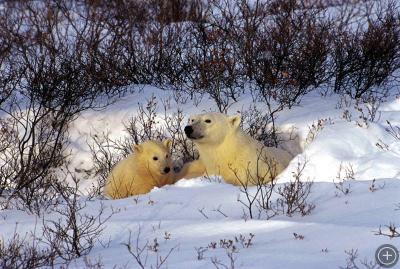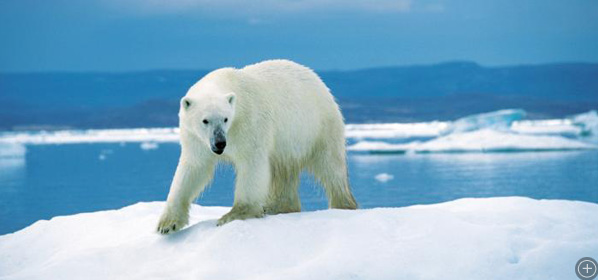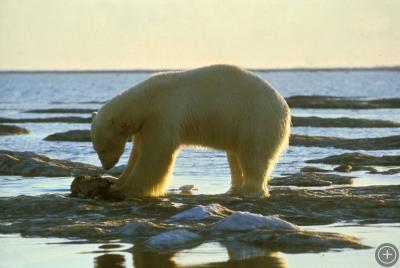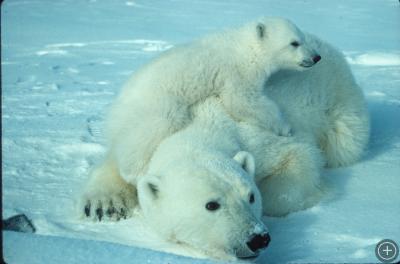Polar Bears
Polar bears lurk near fractures in the sea ice. When a seal surfaces to take a breath, that seal will be yanked out of the water for dinner. A seal dozing on the ice can become a meal, too, when a stealthy polar bear inches up on it. Seals, especially ringed seals, are the polar bear’s prey of choice, but the bears won’t turn up their black-tipped noses if a beluga whale swims into view. Although belugas grow to 15 feet (4.5 m), they’re fairly easy prey for the powerful polar bear.
Polar bears are overwhelmingly creatures of the ice, which is both hunting ground and home. They’re found in greatest numbers on the ice over the shallow coastal waters, which contain an abundance of food.
But in the summer, the coastal ice melts. The bears must find ice in deeper waters or swim to shore. Arctic people and scientists who work in polar bear habitat must keep a watchful eye out for polar bears when the bears are on land. They generally have no fear of humans and can be quite aggressive.

While the majority of polar bears in the past gave birth on the sea ice, increasing numbers of cubs are being born on land, despite the scarcity of resources.
On land, polar bears may eat birds, eggs, rodents, and even plants—but these are mere snacks to the huge bears, which mostly live off their stored fat. Historically, a brief period of open water presented no problems to the bears. But over the last twenty-five years, the ice has been breaking up earlier in the spring and freezing later in the fall, lengthening the time the bears must fast or eat lightly. In addition, the extent of the summer sea ice has decreased by over half a million square miles (about a million square kilometers) in the last quarter century, leaving the bears less room to roam.
Unfortunately, the situation is likely to worsen. Studies released in September 2007 by the U.S. Geological Survey predict that a further decline of the Arctic sea ice could lead to the loss of two-thirds of the polar bear population within half a century. On May 14, 2008, the U.S. Department of the Interior listed polar bears as “threatened” under the Endangered Species Act because of the decreasing sea ice. The government is now required to develop a recovery plan for the bears.









